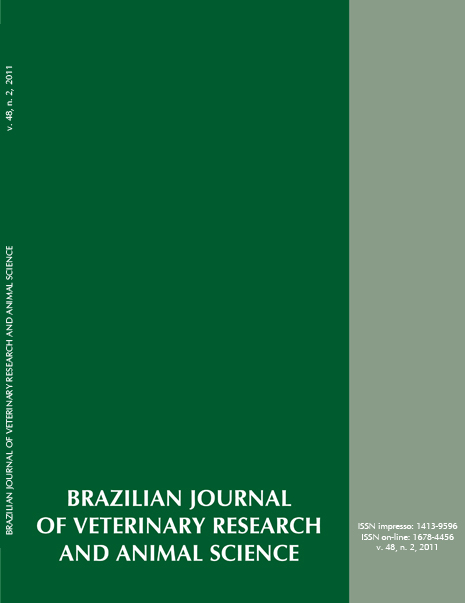Qualitative parameters of lamb meat submitted to organic and conventional production models
DOI:
https://doi.org/10.11606/S1413-95962011000200002Keywords:
Water holding capacity, Color, Tenderness, Heavy metals, Cooking lossesAbstract
This work aimed to evaluate qualitative parameters of meat, sensorial analysis, ivermectin residue and heavy metals from 48 Ile de France lambs submitted to organic and conventional production models which were slaughtered at 32 kg of body weight. Lamb meat from organic model had larger yellowness when compared to conventional model 45 minutes after the slaughter, but L * and a* parameters were not affected; however, not even the color of lamb meat 24 hours after the slaughter was influenced by treatments. There was not effect of treatments in pH and temperature at 45 minutes and 24 hours after the slaughter, in water holding capacity and in shear force, while the cooking losses were influenced by treatments. In the meat of lambs submitted to organic model, the subjective tenderness and the global acceptance were lower when compared to convencional model. Treatments didn't influence arsenic, cadmium and lead meat tenor. Inexistence of ivermectin was verified in meat from organic and conventional production models.Downloads
Downloads
Published
2011-04-01
Issue
Section
UNDEFINIED
License
The journal content is authorized under the Creative Commons BY-NC-SA license (summary of the license: https://
How to Cite
1.
Zeola NMBL, Silva Sobrinho AG da, Manzi GM. Qualitative parameters of lamb meat submitted to organic and conventional production models. Braz. J. Vet. Res. Anim. Sci. [Internet]. 2011 Apr. 1 [cited 2025 Apr. 5];48(2):107-15. Available from: https://revistas.usp.br/bjvras/article/view/34361





